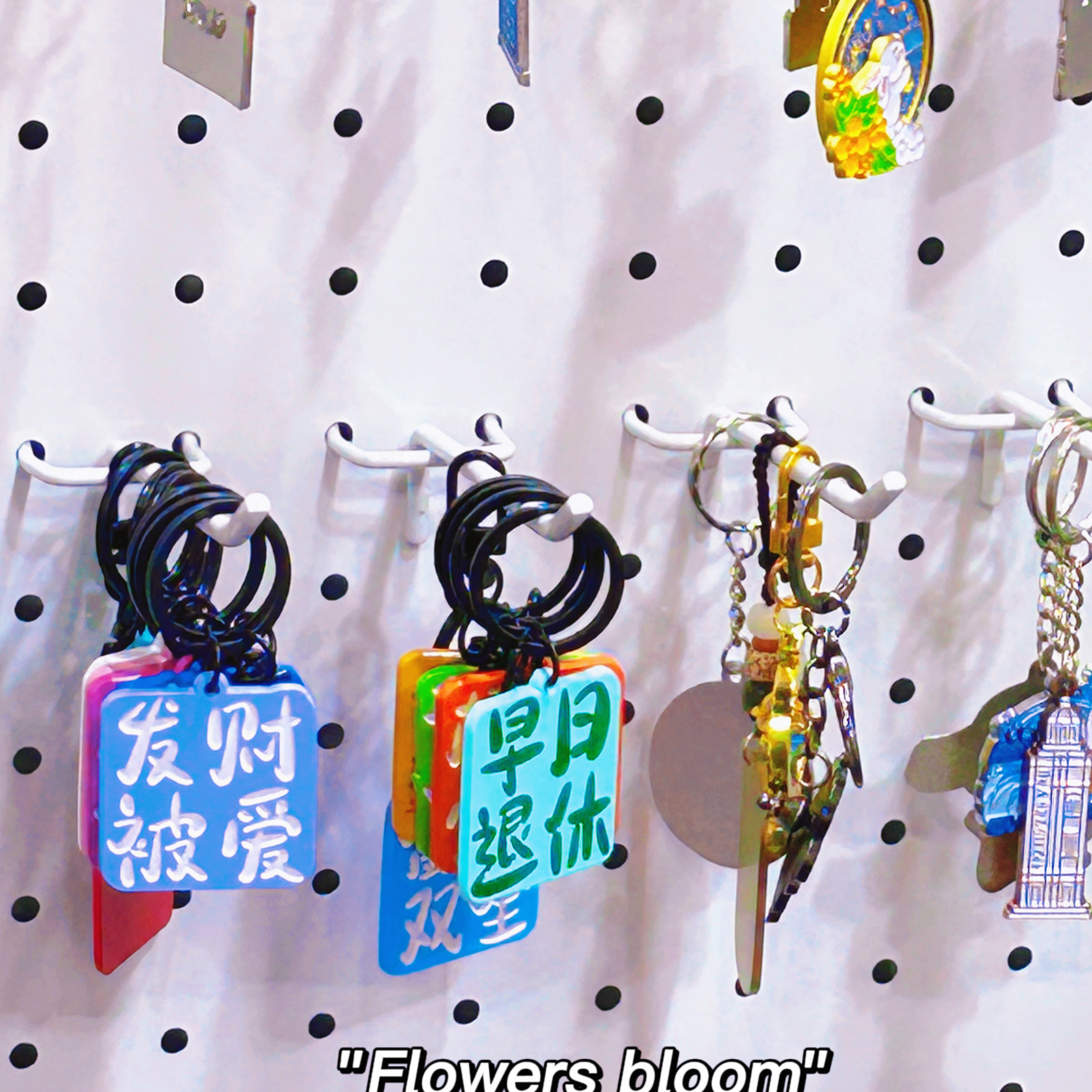
History of Keychains

When did keychains originate?
The origin of keychains can be traced back to ancient times, although the exact origin and timing are unclear. However, the concept of a keychain can be traced back to the time when humans used keys.
In ancient times, people began to use keys to protect property and important items. In order to facilitate the carrying and management of keys, people have invented a device to chain multiple keys together. This is the predecessor of the keychain.
The earliest keychains were probably simple metal rings or chains used to chain keys together and hang from belts, pockets, or other easily accessible locations. This ensures that the keys are readily available and less likely to be lost.
Over time, the design and functionality of keychians has evolved. People started adding decorations and personalization elements such as mascots, logos, letters, etc. to keychains to show their identity, interests or style. Key chains have also begun to use different materials, such as metal, plastic, rubber, leather, etc., to increase durability and aesthetics.
Modern keychains have become a common item, whether for personal use or as a gift. Not only do they offer the convenience of carrying and managing keys, they have also become a popular fashion accessory and way of personalizing them.
Although the exact origin of the keychain cannot be determined, it has become a common item in people’s daily life, and has similar concepts and ways of use in different cultures and regions.
Who invented keychains?
The invention of the keychains goes back a long way, but the exact inventor is not clearly recorded. Because it may have been independently invented by different people in different places. Some of the early keychains designers included Walter Otter, Christian Bales, Patrick Cavenner, etc., who all contributed to the development of the keychains. The earliest form of keychains can be traced back to ancient times, when people used simple ropes or threads to string keys together for easy portability and use.
Regardless of who the specific inventor of the keychain is, it has become a common and useful item that brings convenience to our daily lives. Nowadays, keychains have been developed in various shapes, materials and styles to meet the needs and preferences of different groups of people. Whether as a practical key carrier or a stylish accessory, keychains play an important role in our lives.
When did keychains became popular?
Keychains have been used for practical purposes for many years, but they gained popularity as decorative accessories and collectibles in the 1950s and 1960s. During this time, keychains began to be produced in various shapes, sizes, and materials, allowing people to express their personal style and interests.
The rise of keychain popularity can be attributed to several factors. Firstly, advancements in manufacturing techniques made it easier and more cost-effective to produce keychains in larger quantities. This led to a wider variety of designs and options available to consumers.
Secondly, keychains started to be associated with souvenirs and memorabilia. Tourist destinations, sports teams, and brands began producing keychains featuring their logos or iconic images, allowing people to show their affiliations and commemorate their experiences.
Additionally, keychains became popular as promotional items for businesses. Companies started using keychains as a way to advertise their products or services, often giving them away as freebies or gifts. This further increased the visibility and popularity of keychains.
Over time, keychains have continued to evolve and adapt to changing trends and consumer preferences. They remain a popular accessory, not only for holding keys but also as fashion statements, personal expressions, and collectible items. Today, keychains come in a wide range of designs, materials, and functions, catering to various interests and styles.
How do keychains work?
The working principle of the keychain is very simple and practical. Its main purpose is to hold keys together and provide portability and ease of use. Here’s how the keychain basically works:
1. Key Ring/Ring: A key fob usually consists of one or more rings, which are circular metal or plastic rings that fit through the key’s hole or ring. These loops are usually elastic and can be opened and closed easily.
2.Key Securement: Put the key in the ring and close the ring to ensure the key is securely attached to the key fob. The key can be secured by closing the ring completely, or by using an open ring where the key is passed through the ring leaving a small gap.
3. Buckle/connector: Keyfobs typically have a buckle or connector that is used to attach the keyfob to another item, such as a purse, backpack, handbag, or a hook for pants. This clasp is usually an open metal ring or a plastic clip with a snap-on design.
With such a design, the key fob securely holds keys together and conveniently carries them on the body via a clasp or connector. This makes the keys easier to organize, carry and use, avoiding the loss or confusion of keys. The key fob also provides a convenient way for the user to quickly find and remove the desired key.
In summary, keychains work by holding keys together through a loop and attaching them to other items using clasps or connectors to provide portability and ease of use.
A Story about Keychains
Once upon a time in a quaint little town, there lived a humble keychain named Oliver. Oliver was not like any other keychain; he possessed a unique ability to bring happiness and luck to anyone who owned him.
One day, Oliver found himself in a small antique shop, surrounded by forgotten treasures. He longed for someone to discover his special powers and take him home.
As fate would have it, a young girl named Emily entered the shop. Emily had recently moved to the town and was feeling a bit lonely. She was drawn to the antique shop, hoping to find something that would bring her comfort and joy.
As Emily browsed through the shelves, her eyes met Oliver’s gleaming charm. There was an instant connection, as if Oliver was calling out to her. Emily knew she had found something special.
From that moment, Oliver became Emily’s constant companion. She attached him to her backpack, carrying him wherever she went. Little did Emily know, Oliver had the power to turn ordinary moments into extraordinary ones.
As Emily went about her daily life, Oliver worked his magic. He brought her unexpected smiles from strangers, helped her find lost objects, and even brought her good luck in school tests and competitions. Oliver was a true source of joy and positivity in Emily’s life.
Word of Oliver’s enchanting abilities spread throughout the town, and people began seeking him out. Oliver found himself being passed from one person to another, spreading happiness and good fortune wherever he went.
But Oliver never forgot his true companion, Emily. Even as he embarked on new adventures with different owners, he always found his way back to her. Emily cherished Oliver’s visits, knowing that he brought a touch of magic into her life each time.
As the years went by, Emily grew older and eventually moved away from the town. Oliver was left behind, longing for his dear friend. However, his legacy lived on, as the town’s residents continued to share stories of the keychain that brought them luck and happiness.
To this day, Oliver remains a symbol of hope and positivity. His story reminds us all that sometimes, the smallest and simplest things can make the biggest difference in our lives. So, if you ever come across a special keychains like Oliver, hold onto it tightly, for you never know the magic it may bring into your world.
Do you have a deeper understanding of keychains after reading the entire article? Do you want to have an exclusive customized keychain to accompany yourself like Oliver? Hamfai can provide keychains customization service, as long as you have an idea, let us realize it together. Waiting for your arrival!

